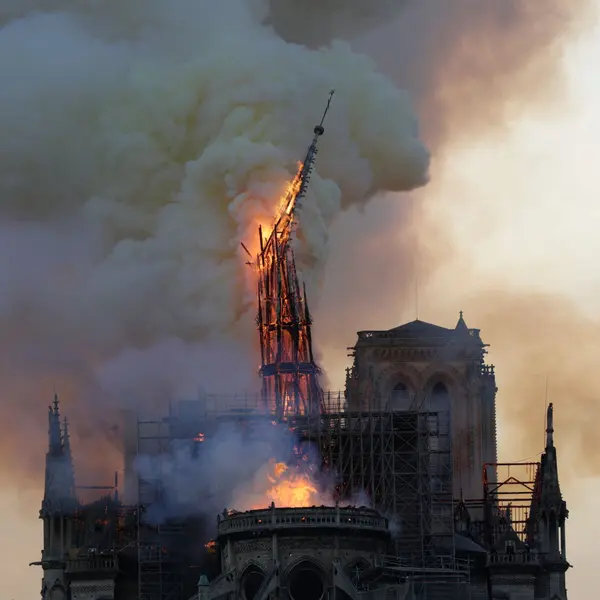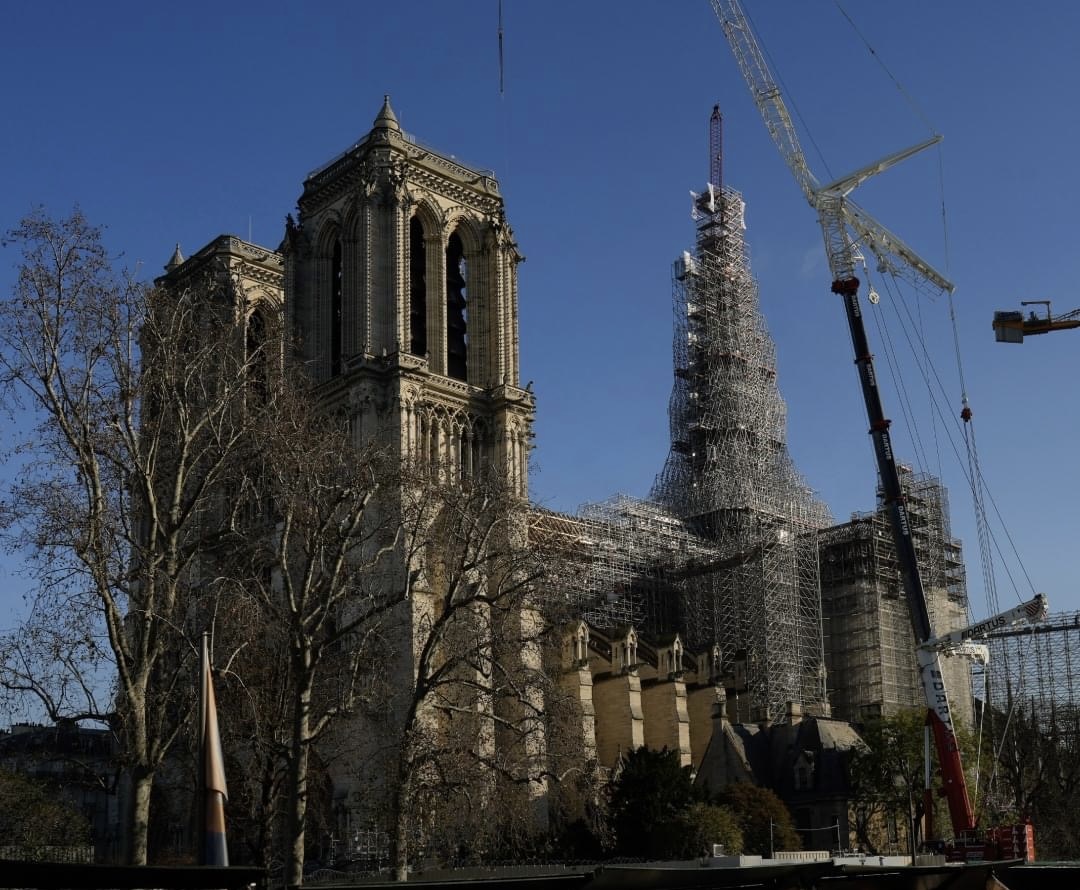After Toppling in the 2019 Fire, Notre-Dame’s Spire Rises Again
After a devastating fire in 2019, President Emmanuel Macron of France vowed Notre-Dame would be rebuilt within five years. So far, the schedule is on track, with the spire expected to be finished by the end of the month.
President Emmanuel Macron had vowed to rebuild within five years from a blaze that marred the famed Paris cathedral. So far, the schedule is on track.
President Emmanuel Macron of France was in the heart of Paris on Friday to check on progress in the restoration of an 860-year-old limestone landmark: Notre-Dame Cathedral, whose familiar silhouette is rising once again on the skyline of the French capital.

On a chilly, humid morning, Mr. Macron donned a hard hat and took a three-minute elevator ride to visit a new spire that is nearing completion atop the famed Gothic edifice that was ravaged by a devastating fire in April 2019.
His visit came one year to the day before Notre-Dame is scheduled to reopen, on Dec. 8, 2024.
“It’s a great source of pride,” Mr. Macron said as he shook hands with carpenters from the top of the scaffolding. Later, looking down at workers clustered farther below, he shouted: “Merci!”
He had reason to be grateful. The fire’s embers were still smoldering in 2019 when he solemnly vowed that the cathedral would be rebuilt within five years — an ambitious deadline that officials are increasingly confident will be met.
The spire is expected to be finished by the end of the month. Carpenters are also nearly done with a new triangular wooden attic to replace what used to be called the “forest” — a latticework of ancient timbers that was ravaged by the fire.
Inside, workers have started to remove scaffolding from the nave and the choir, and have nearly finished cleaning more than 450,000 square feet of stone surfaces that had been darkened by soot, dust and lead particles.
“We have seen this seemingly impossible project move forward,” Mr. Macron said.
Renovation work — especially on the exterior — will continue for several more years after the cathedral reopens, but Notre-Dame will be able to welcome religious services and visitors, 12 million of whom used to visit every year.
The blaze destroyed the entirety of Notre-Dame’s attic, melted the roof’s lead sheath and seriously endangered the stability of the stone structure. The spire burned and crashed down, punching giant, jagged holes into the vaults and sending gobs of molten metal and charred beams plummeting below.
For thousands of Parisians who watched aghast from the banks of the Seine, and for millions of viewers around the world watching on television, the spire’s fall was the most shocking symbol of the fire’s destructive power. Now, its reconstruction has become one of the most visible and most potent symbols of the cathedral’s rebirth.
“These people rose to an incredible challenge,” Philippe Jost, who heads the task force in charge of the reconstruction, told Mr. Macron at the spire, referring to the workers at the site.
About 500 people are busy at the construction site every day, including architects, engineers, masons, metal workers, carpenters, steeplejacks, and more. Hundreds of others have been involved in workshops around France, using both modern technology and centuries-old techniques — like squaring oak beams with an ax — to re-create parts being transported to Paris.
Mr. Macron had briefly floated the idea of a “contemporary architectural gesture” to replace the spire, a 19th-century Gothic design by the French architect Eugène Viollet-le-Duc that had replaced the cathedral’s original, deteriorated one.
But that idea was dropped and like the rest of the cathedral, the spire is being rebuilt as it was in 2019 — a wooden framework covered in lead sheeting, topped by a cross and a copper rooster that will overlook Paris from its perch more than 300 feet above ground.
A new cross was hoisted above the top of the spire this week; a new rooster, which still must be blessed in keeping with Catholic tradition, will soon follow. (The New York Times)





